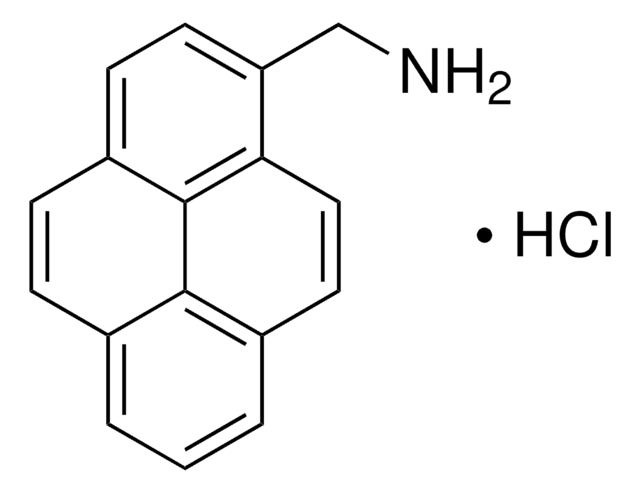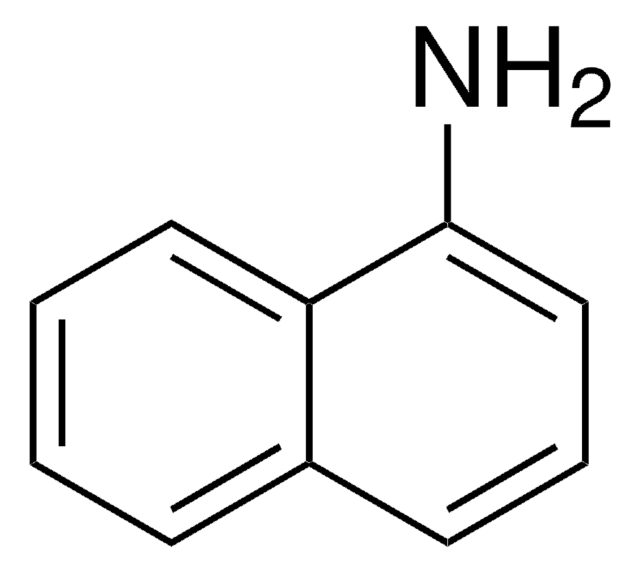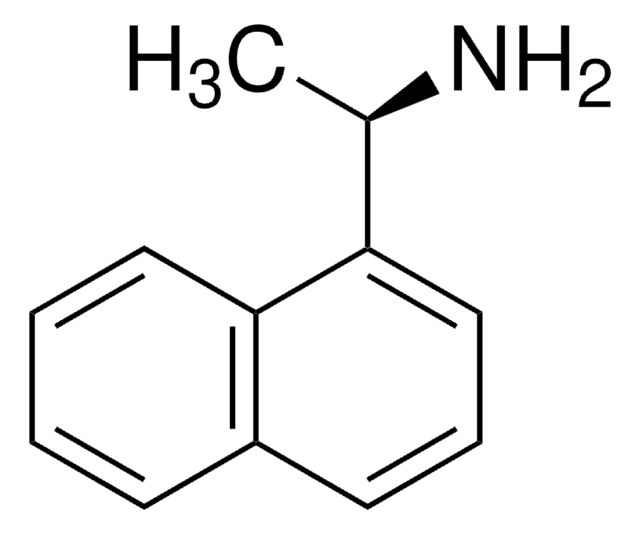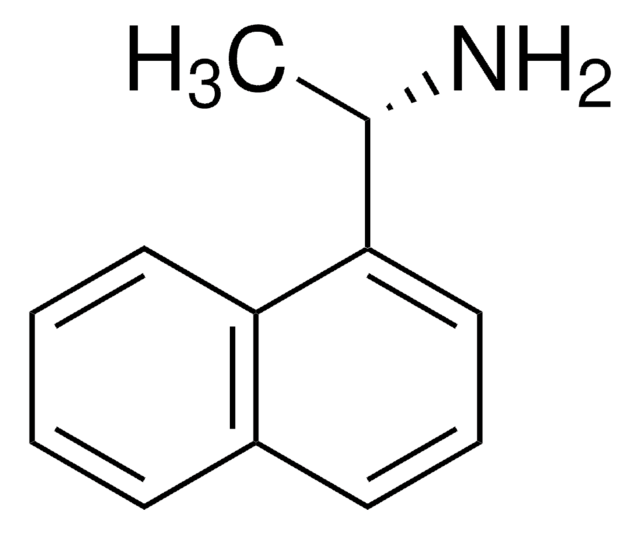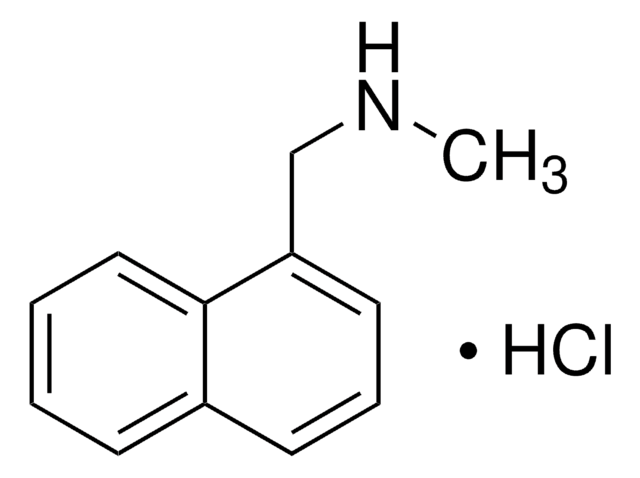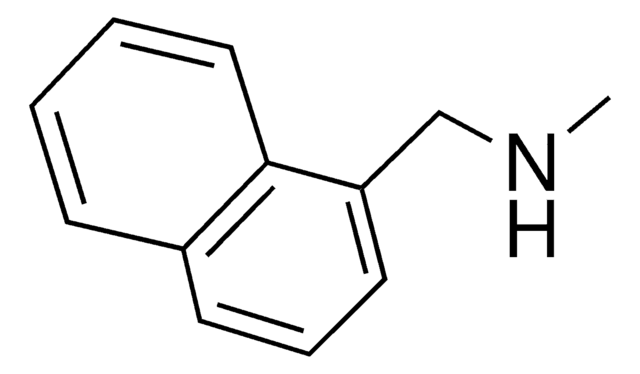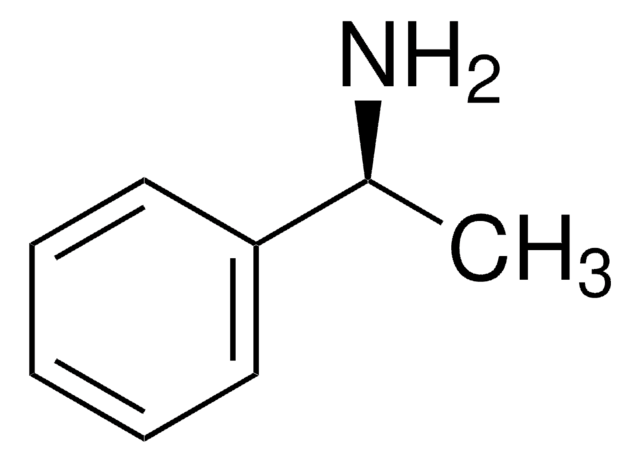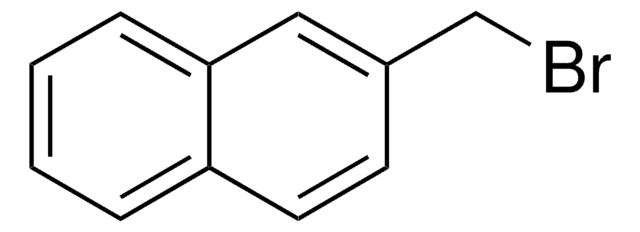127035
1-Naphthylmethylamine
97%
Sinónimos:
1-(Aminomethyl)naphthalene, 1-Naphthalenemethylamine
About This Item
Productos recomendados
Nivel de calidad
Ensayo
97%
Formulario
liquid
índice de refracción
n20/D 1.643 (lit.)
bp
290-293 °C (lit.)
densidad
1.073 g/mL at 25 °C (lit.)
grupo funcional
amine
cadena SMILES
NCc1cccc2ccccc12
InChI
1S/C11H11N/c12-8-10-6-3-5-9-4-1-2-7-11(9)10/h1-7H,8,12H2
Clave InChI
NVSYANRBXPURRQ-UHFFFAOYSA-N
Información sobre el gen
rat ... Adra2a(25083)
¿Está buscando productos similares? Visita Guía de comparación de productos
Descripción general
1-Naphthylmethylamine increases the induced circular dichroism (ICD) magnitude exhibited by Poly[(4-carboxyphenyl)acetylene]. It forms carbamate by reacting with monomethoxypoly(ethylene glycol) succinimido carbonate (mPEG-SC).
Aplicación
- Photoluminescence Modulation: A study demonstrates the modulation of photoluminescence in Ruddlesden-Popper perovskite using phase distribution regulation, revealing potential applications in optoelectronic devices. 1-Naphthylmethylamine plays a critical role in enhancing the material properties for improved device performance (Zhao et al., 2023).
- Perovskite Light-Emitting Diodes: Research highlights the dimensional tailoring of quantum wells through ultrahigh vacuum annealing to enhance the efficiency of perovskite light-emitting diodes. This process utilizes 1-Naphthylmethylamine to improve the interlayer electronic properties and device stability, contributing significantly to advancements in LED technology (Yu et al., 2020).
Palabra de señalización
Warning
Frases de peligro
Consejos de prudencia
Clasificaciones de peligro
Eye Irrit. 2 - Skin Irrit. 2 - STOT SE 3
Órganos de actuación
Respiratory system
Código de clase de almacenamiento
10 - Combustible liquids
Clase de riesgo para el agua (WGK)
WGK 3
Punto de inflamabilidad (°F)
235.4 °F - closed cup
Punto de inflamabilidad (°C)
113 °C - closed cup
Equipo de protección personal
Eyeshields, Gloves, type ABEK (EN14387) respirator filter
Elija entre una de las versiones más recientes:
¿Ya tiene este producto?
Encuentre la documentación para los productos que ha comprado recientemente en la Biblioteca de documentos.
Los clientes también vieron
Nuestro equipo de científicos tiene experiencia en todas las áreas de investigación: Ciencias de la vida, Ciencia de los materiales, Síntesis química, Cromatografía, Analítica y muchas otras.
Póngase en contacto con el Servicio técnico
